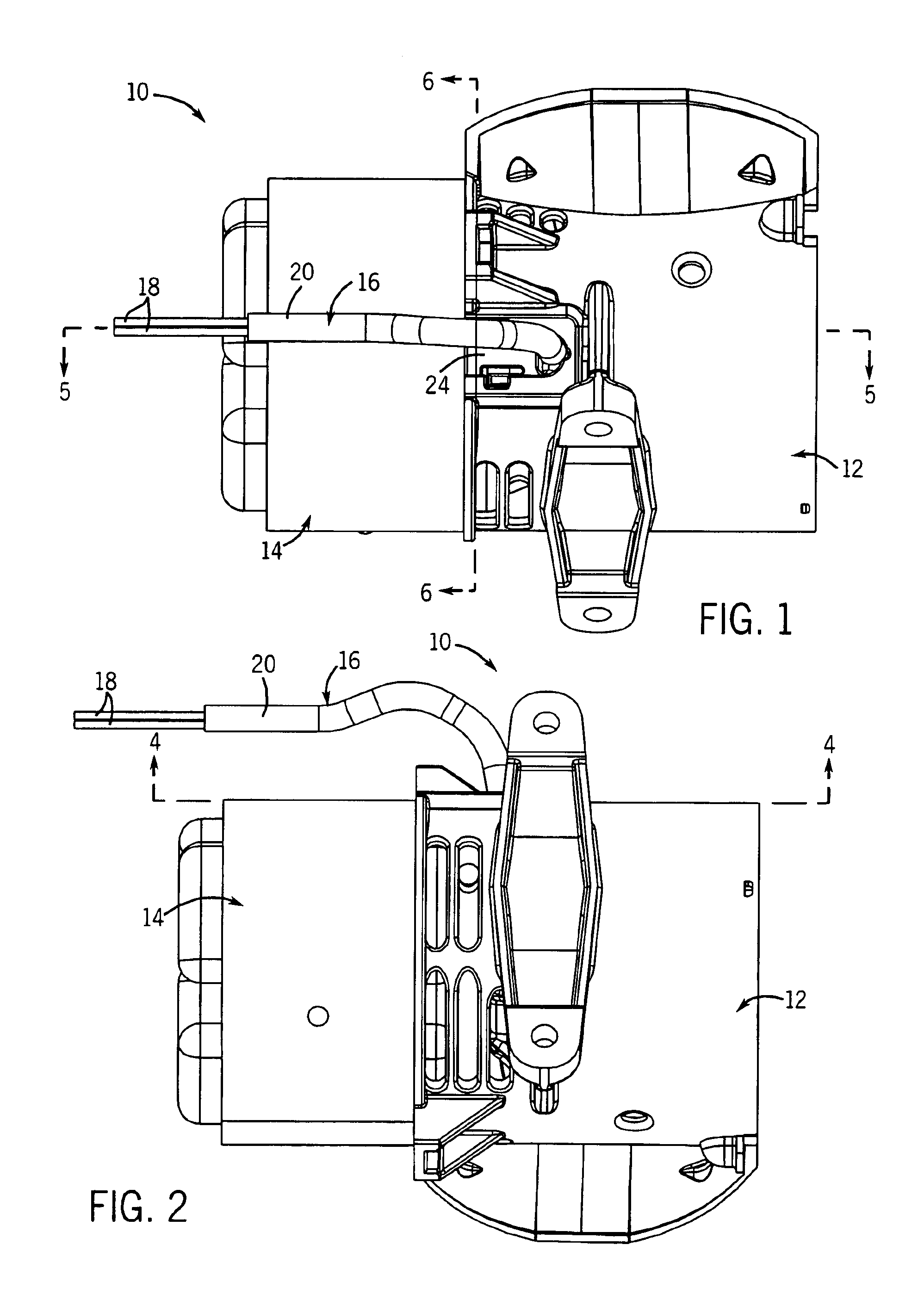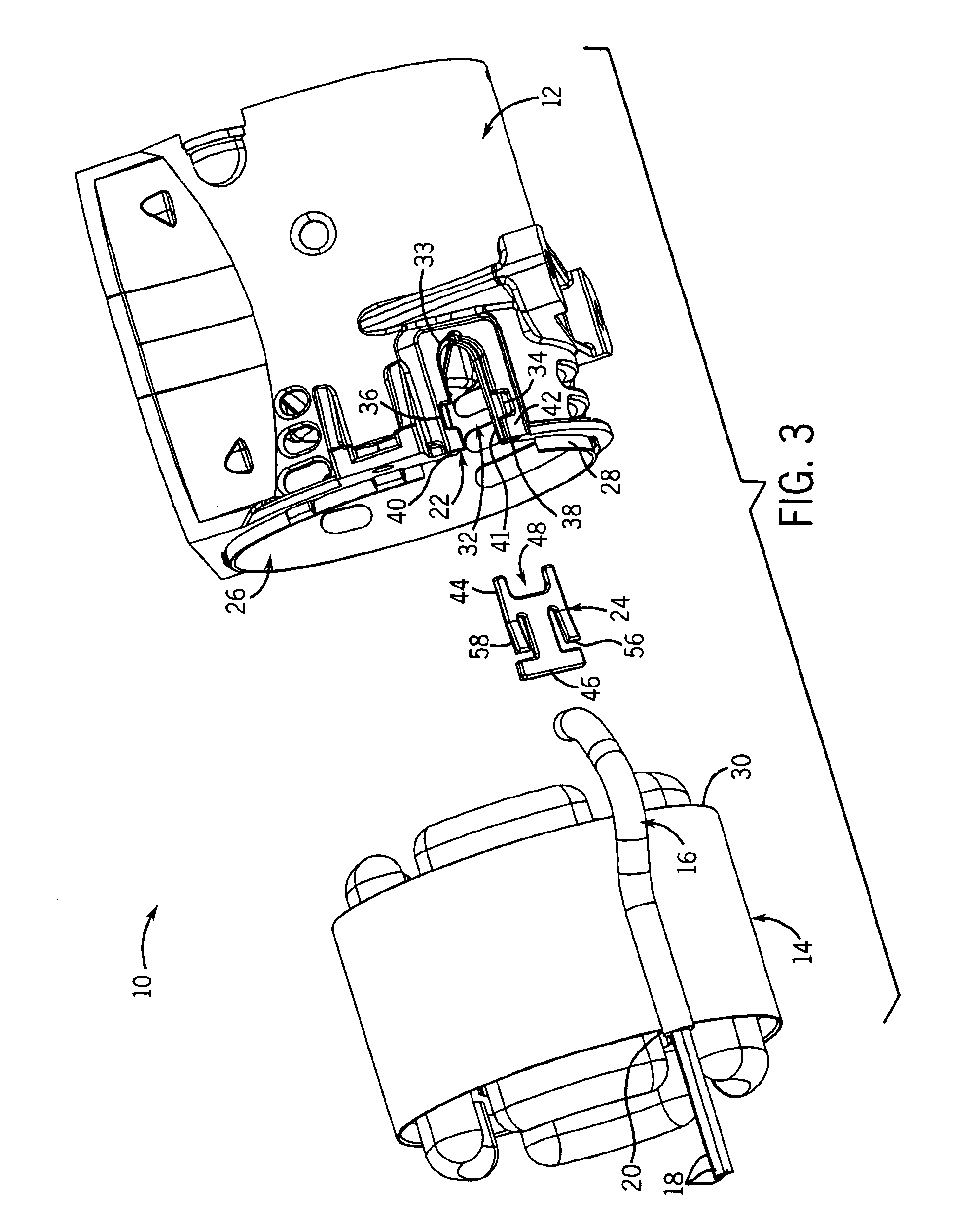Lead retention bushing
a technology of retention bushing and lead, which is applied in the direction of electrical apparatus, connection, coupling device connection, etc., can solve the problems of excessive pinching of conductors, inconvenient assembly, and insufficient clamping of the cord, so as to relieve the strain on the cord connection, facilitate assembly, and limit movement
- Summary
- Abstract
- Description
- Claims
- Application Information
AI Technical Summary
Benefits of technology
Problems solved by technology
Method used
Image
Examples
Embodiment Construction
Referring to FIGS. 1-3, the present invention provides a power cord retention system with a lead retention bushing. The bushing can be characterized as either a “strain relief bushing”, such as shown in FIG. 7A, for clamping against a power cord or as an “open-closed bushing” (or “lead-edge protector”), such as shown in FIG. 7B for protecting the lead edge of individual conductive leads (not part of a cord arrangement).
In either case, the bushing is particularly suited for use with a compressor / pump 10 having associated piston / cylinder assemblies (not shown) contained in a crankcase housing 12 to which is mounted an AC drive motor 14. The motor 14 has a either a power cord 16 with three conductor leads 18 contained in its insulating sheathing 20 (or separate conductor leads not contained in a cord sheathing).
The housing 12 is preferably generally cylindrical and made of a suitable plastic. The wall of the housing 12 is formed with a pocket 22 for receiving a bushing 24, as described...
PUM
 Login to View More
Login to View More Abstract
Description
Claims
Application Information
 Login to View More
Login to View More - R&D
- Intellectual Property
- Life Sciences
- Materials
- Tech Scout
- Unparalleled Data Quality
- Higher Quality Content
- 60% Fewer Hallucinations
Browse by: Latest US Patents, China's latest patents, Technical Efficacy Thesaurus, Application Domain, Technology Topic, Popular Technical Reports.
© 2025 PatSnap. All rights reserved.Legal|Privacy policy|Modern Slavery Act Transparency Statement|Sitemap|About US| Contact US: help@patsnap.com



